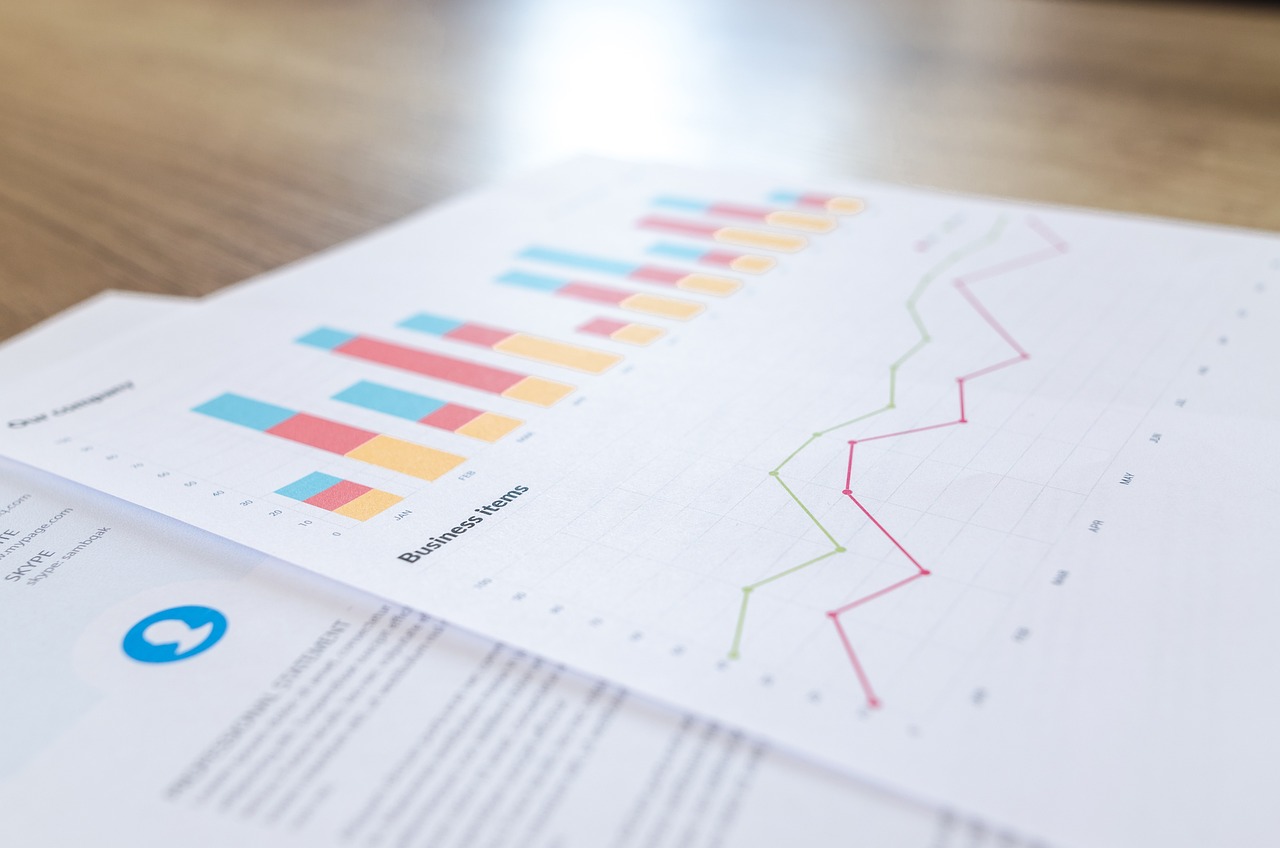

Accounting is the backbone of any organization’s financial operations – however, it has to be done correctly and within regulations. The Generally Accepted Accounting Principles (GAAP) play a vital role in establishing consistency and reliability in financial reporting. GAAP serves as a set of accounting standards that help business owners and entrepreneurs into prepare and present their financial statements.
In this blog post, we will delve into the world of GAAP and explore its significance in the field of accounting. Whether you are an accounting professional, a business owner, or simply interested in understanding the principles that govern financial reporting, this will serve as a valuable resource. By gaining a comprehensive understanding of GAAP, you will be equipped with the knowledge necessary to navigate the world of accounting with confidence.
Why does GAAP exist?
GAAP exists for several important reasons. Here are some key reasons behind the existence of GAAP:
1. Standardization and consistency
GAAP provides a set of standardized accounting principle that enable businesses and organizations to consistently prepare and present their financial statements. This standardization ensures that financial information is reported in a consistent manner, allowing for comparability across different companies, industries, and time periods.
2. Reliable and trustworthy financial reporting
GAAP is essential for ensuring the reliability and accuracy of financial reporting. By adhering to GAAP, companies follow established guidelines that promote transparency, disclosure of relevant information, and the use of reliable accounting methods. This helps to build trust among stakeholders.
3. Decision-making and investment analysis
GAAP also provides users of financial statements with reliable and consistent information to make informed decisions. Those invested in the business will rely on financial statements prepared in accordance with GAAP to assess the financial health, performance of a company.
4. Compliance with legal and regulatory requirements
Many countries have laws and regulations that require companies to prepare their financial statements in accordance with GAAP. Compliance with GAAP ensures that companies meet legal and regulatory requirements related to financial reporting.
5. Facilitating auditing and assurance
GAAP provides a framework for auditors to assess the fairness and reliability of financial statements. Auditors rely on GAAP to express their professional opinions on the accuracy of financial statements.
6. Global harmonization and comparability
While there are differences between GAAP and international accounting standards (such as IFRS), efforts towards convergence seek to reduce disparities and enhance global harmonization. Consistency and comparability between different countries’ accounting standards facilitate cross-border investment, promote transparency in multinational companies, and simplify financial reporting for international organizations.
In summary, GAAP exists to promote standardization, reliability, transparency, and comparability in financial reporting. It plays a crucial role in facilitating decision-making, ensuring compliance with legal and regulatory requirements, and building trust among stakeholders in the financial markets.
The history of GAAP
The history of Generally Accepted Accounting Principles (GAAP) can be traced back to the early 20th century when the need for standardized accounting practices became apparent. Prior to the establishment of GAAP, companies used various accounting methods, resulting in inconsistent financial reporting and limited comparability between financial statements.
Here is an overview of the key milestones in the history of GAAP:
- Early 20th Century: In the early 1900s, the lack of consistent accounting principles prompted discussions to address the issue. The American Institute of Accountants (now known as the American Institute of Certified Public Accountants or AICPA) was founded in 1887, and it played a crucial role in the development and promotion of standardized accounting practices.
- The Securities Act of 1933 and the Securities Exchange Act of 1934: The stock market crash of 1929 and the subsequent Great Depression led to increased scrutiny of financial reporting. In response, the U.S. government introduced securities regulations to protect investors. The Securities Act of 1933 and the Securities Exchange Act of 1934 established the Securities and Exchange Commission (SEC) and mandated the use of standardized accounting principles for publicly traded companies.
- The Committee on Accounting Procedure (CAP): In 1939, the AICPA established the CAP, a specialized committee responsible for developing accounting standards. The CAP issued 51 Accounting Research Bulletins (ARBs) between 1939 and 1959, which provided guidance on various accounting topics. These bulletins helped to standardize accounting practices and promote consistency.
- The Accounting Principles Board (APB): In 1959, the CAP was replaced by the APB, which continued the task of issuing accounting principles. The APB issued 31 opinions between 1959 and 1973, but it faced criticism for its slow response to emerging accounting issues and its inability to enforce its opinions effectively.
- The Financial Accounting Standards Board (FASB): In response to the shortcomings of the APB, the FASB was established in 1973. The FASB is an independent, private-sector organization responsible for developing and updating GAAP in the United States. It operates under the oversight of the Financial Accounting Foundation (FAF). The FASB employs a transparent and inclusive standard-setting process, considering input from various stakeholders to ensure that GAAP reflects the needs of financial statement users.
- International Convergence: With the increasing globalization of business and financial markets, efforts towards convergence between GAAP and International Financial Reporting Standards (IFRS) gained momentum. The FASB and the International Accounting Standards Board (IASB) have been working on projects to align their standards and reduce differences between GAAP and IFRS. Although full convergence has not been achieved, steps have been taken to improve comparability and compatibility between the two sets of accounting principles.
The history of GAAP reflects the continuous evolution of accounting practices and the ongoing efforts to establish standardized principles for financial reporting. The establishment of regulatory bodies, such as the SEC and the FASB, has played a significant role in developing and enforcing GAAP, ensuring consistency, reliability, and transparency in financial reporting.
10 key principles of GAAP
The Generally Accepted Accounting Principles (GAAP) are a set of rules and standards that public companies in the United States must follow when reporting financial data. The following are ten key principles of GAAP:
- Principle of Regularity
This principle is about adhering to the rules and regulations of GAAP. - Principle of Consistency
This principle emphasizes the need for accountants to use the same methods and principles from one accounting period to the next to ensure comparability. - Principle of Sincerity
The accountant strives to provide an accurate, impartial depiction of a company’s financial situation. - Principle of Permanence of Methods
The procedures used in financial reporting should be consistent, allowing a comparison of the company’s financial information. - Principle of Non-Compensation
Both negatives and positives should be reported with full transparency and without the expectation of debt compensation. - Principle of Prudence
Prudence principle in accounting refers to providing factual and conservative estimates so that the company’s financial condition is not overstated. - Principle of Continuity
This assumes the company will continue its activities in the foreseeable future, which is related to the “going concern” principle. - Principle of Periodicity
This is about the allocation of transactions and events into the appropriate period. - Principle of Materiality
This principle requires accountants to include all significant information in the financial reports. - Principle of Utmost Good Faith
This principle requires all parties involved to act honestly and disclose all relevant facts.
This list further emphasizes the wide range of considerations that accountants must take into account when preparing and presenting financial statements in accordance with GAAP.

How to comply with GAAP internationally
Complying with GAAP internationally involves understanding the similarities and differences between the accounting standards of different countries and ensuring that financial statements are prepared in accordance with the applicable accounting framework. Here are some steps to help ensure international compliance with GAAP:
- Determine the applicable GAAP: Identify the accounting framework that is applicable to your organization based on its geographical location and the requirements of the local regulatory authorities. Commonly used frameworks include U.S. GAAP, IFRS (International Financial Reporting Standards), and country-specific GAAP (e.g., UK GAAP, Canadian GAAP).
- Understand the differences: Familiarize yourself with the key differences between the applicable GAAP and other accounting standards. Identify variations in recognition, measurement, presentation, and disclosure requirements. This will help you identify areas where adjustments or additional disclosures may be necessary to ensure compliance.
- Conduct a gap analysis: Perform a thorough review of your organization’s existing accounting policies, practices, and financial statements. Compare them to the requirements of the applicable GAAP to identify any gaps or deviations. This analysis will help you identify areas that require adjustments or additional disclosures to comply with the applicable GAAP.
- Train accounting staff: Ensure that your accounting staff, including financial managers and accountants, are trained on the specific requirements of the applicable GAAP. Provide them with the necessary resources, including updated accounting standards, technical guidance, and training programs, to enhance their understanding and ability to comply with GAAP.
- Update accounting policies and procedures: Review and update your organization’s accounting policies and procedures to align them with the applicable GAAP. Make necessary revisions to ensure compliance with specific requirements, such as revenue recognition, expense recognition, asset valuation, and financial statement presentation. Document the changes and communicate them to the relevant stakeholders within your organization.
- Seek professional assistance: If needed, consult with external accounting professionals or experts who are well-versed in the applicable GAAP. They can provide guidance, assist with technical interpretations, and help ensure compliance with the specific requirements of GAAP.
- Stay updated: GAAP standards are subject to revisions and updates over time. Stay informed about any changes to the applicable GAAP through regular monitoring of accounting standard-setting bodies, regulatory updates, and professional organizations. This will help you stay current with evolving accounting requirements and ensure ongoing compliance.
Complying with GAAP internationally requires a combination of technical knowledge, adherence to accounting standards, and an understanding of local regulatory requirements. By following these steps and maintaining a commitment to accuracy and transparency, organizations can effectively navigate international GAAP compliance.
So, why is it so important to comply with GAAP?
As you might be able to see, complying with GAAP (Generally Accepted Accounting Principles) is crucial. It provides rules and guidelines for accurate financial statement preparation, ensuring reliable information that reflects the company’s true financial position. Not only do they help in this regard, but they also protect from any potential legal issues. Misrepresenting financial information – even accidental – can be enormously detrimental to a business.
Finally, GAAP compliance facilitates audits and due diligence processes, allowing external auditors and potential partners to assess financial health and performance accurately. As any business owner will be able to say, without this transparency and accuracy, growth will halt and success will seem impossible. Try using Brixx to stay on top of your finances and manage your growth.
GAAP FAQs
GAAP vs IFRS
GAAP (Generally Accepted Accounting Principles) and IFRS (International Financial Reporting Standards) are two of the prominent sets of accounting standards used internationally. While both frameworks aim to ensure reliable financial reporting, there are significant differences between them.
International applicability
- GAAP: Primarily used in the United States
- IFRS: Adopted by many countries around the world, including the European Union, Canada, Australia, and several emerging economies
Standard-setting bodies
- GAAP: Developed and updated by the Financial Accounting Standards Board (FASB)
- IFRS: Developed and updated by the International Accounting Standards Board (IASB)
Principles vs. rules
- GAAP: Focuses on detailed rules-based guidance, with specific requirements for different accounting treatments
- IFRS: Focuses on principles-based guidance, providing a broader framework that allows for professional judgment and interpretation
Financial statement presentation
- GAAP: Typically requires a multi-step income statement format and allows for extraordinary items to be separately disclosed
- IFRS: Generally uses a single-step income statement format and does not permit the separate classification of extraordinary items
Inventory valuation
- GAAP: Permits the use of various methods for inventory valuation, including Last-In, First-Out (LIFO)
- IFRS: Prohibits the use of LIFO and generally requires the use of either First-In, First-Out (FIFO) or weighted average cost methods for inventory valuation
Leases
- GAAP: Classifies leases as either operating leases or capital leases, with specific criteria for determining lease classification
- IFRS: Introduced a new standard, IFRS 16, which requires most leases to be recognized on the balance sheet as right-of-use assets and lease liabilities
Research and development costs
- GAAP: Research costs are expensed as incurred, while development costs are capitalized if certain criteria are met
- IFRS: Allows for capitalization of development costs under specific circumstances, similar to GAAP, but also provides more guidance on the criteria for capitalization
Revaluation of assets
- GAAP: Generally prohibits the revaluation of assets to fair value, except for specific cases such as investment properties
- IFRS: Permits the revaluation of certain assets, such as property, to fair value under specific conditions
It is important to note that efforts have been undertaken to align GAAP and IFRS standards, aiming to reduce differences and enhance global comparability. However, full convergence has not been achieved, and businesses operating internationally may need to navigate the varying requirements of both frameworks to ensure compliance with relevant accounting standards.














